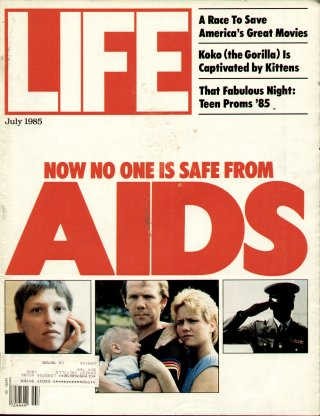An ongoing dialogue on HIV/AIDS, infectious diseases,
June 4th, 2011
HIV Epidemiology and Something Even Many Smart Medical Students Don’t Know
 Periodically I like to give an informal quiz to the medical students about HIV epidemiology. It’s a multiple choice question that goes something like this:
Periodically I like to give an informal quiz to the medical students about HIV epidemiology. It’s a multiple choice question that goes something like this:
Based on the recent epidemiology of HIV in the United States, in what group are new cases of HIV infection rising the fastest?
- Men who have sex with men (MSM)
- Injection drug users (IDUs)
- Heterosexual women
- Some other group
(Correct answer: #1.)
Now these are smart kids. Many of them have done impressive things before starting med school, including a bunch who have even worked in the HIV field (especially global HIV). Yet despite these brains and experience, you’d be amazed how often they choose the wrong answer, most commonly choosing #3 (a group in whom incidence is essentially flat or declining) or #2 (injection drug use HIV in the USA is, thankfully, disappearing).
On the 30th Anniversary of the first report of what is now known as AIDS, the MMWR has released its latest HIV Surveillance report. And, as in pretty much every year for more than a decade, here are the facts:
Surveillance data show that the proportion of HIV diagnoses occurring in MSM continues to grow. HIV incidence among MSM has increased steadily since the early 1990s. In 2009, MSM accounted for 57% of all persons and 75% of men with a diagnosis of HIV infection... Syphilis and gonorrhea are endemic among MSM; outbreaks or hyperendemic sexually transmitted infections have been reported from many communities where HIV infection also is prevalent, further increasing the risk for acquiring and transmitting HIV.
I’m not sure why this isn’t more widely known (certainly we HIV/ID specialists know it), but I have a theory. Sometimes a story has media “stickiness”, and once it’s out there, it’s hard to get rid of it. When AIDS first hit, it was overwhelmingly a disease of MSM and IDUs; quickly it became apparent, however, that it was a sexually transmitted infection so that women were at risk too. This was a big media story — famous Life Magazine cover shown above — and somehow this has never disappeared.
It’s kind of like, “tuberculosis is making a comeback in the USA” when, in fact, TB rates are historically low. The TB Comeback is just too sticky. Same thing with the generalized HIV epidemic in this country which, if you take a look at this incredibly cool map, has never happened.
Take home message: HIV prevention and testing efforts should be maximally deployed where the epidemic is still raging. Here in the USA, that means MSM and/or communities of color.


I’m a medical student who guessed incorrectly (heterosexual women) because the question made it sound like this was a novel and surprising discovery. I felt like the obvious answer was MSM, but that it wouldn’t be this group because the title of the article and the predicted trickiness of the question made it sound like the correct group was going to shock me. Perhaps medical students are expecting trick questions, or are afraid to answer what sounds like it could be a stereotyping answer.
Caitlin, these are two excellent points; the last one is particularly powerful, and gets at one of the difficulties of epidemiologic data. But I don’t think they are the only explanations, as if one asks this of non-med students in casual conversation you get the same response.
Paul
I thought also at heterosexual women because it seems me that smart and non smart students are sure (as I am )that MSM is indeed the group suspected . And now is suggested that there is between an unexpected group that HIV is rising!
Sombody feld somthing else ?
I am a retired doctor (intensivist ) living in a oriental country, that now works as primary care physitian helping undoccumented residents without possibility of acces to medical issurance .Positive HIV is not rare like between our citiciens .Not even between heterosexual women .